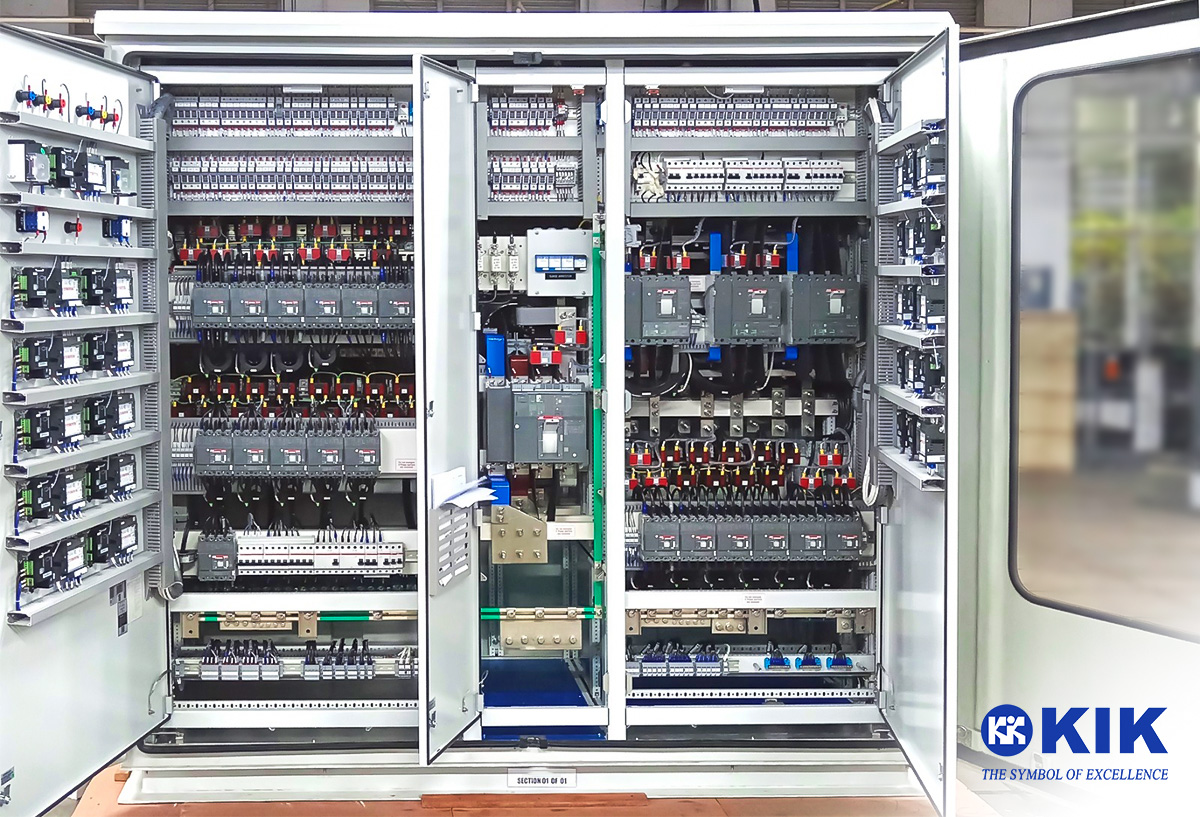
Considering temperature rise inside an outdoor switchboard is crucial for several reasons:
- Component Longevity: High temperatures can shorten the lifespan of electrical components and insulation. Prolonged exposure to elevated temperatures can lead to premature failure of circuit breakers, contactors, and other components, which may result in costly repairs or replacements.
- Safety: Excessive heat can increase the risk of fire or electrical faults. Overheating can cause insulation to degrade or fail, leading to short circuits or electrical fires. Maintaining temperature within recommended limits is essential for safety.
- Performance: Electrical equipment operates optimally within a certain temperature range. Excessive temperature rise can affect the performance and efficiency of the switchboard, leading to reduced reliability and potential operational issues.
- Compliance: Regulations and standards often specify maximum allowable temperature rises to ensure safety and reliability. Compliance with these standards is necessary to meet legal and insurance requirements.
To maintain the temperature- rise within recommended values while keeping the IP 65 rating, you can take the following steps:
- Ventilation:
- Design for Airflow: Even with an IP 65 rating (which means the enclosure is protected against dust and water jets), you can still design the switchboard with ventilation features that allow for air circulation. This may include the use of filtered vents or fan-assisted cooling systems. Ensure that any ventilation design maintains the enclosure’s IP rating by using appropriate filters or barriers.
- Heat Dissipation: Position components to allow for optimal airflow and heat dissipation. Avoid clustering heat-sensitive components together.
- Cooling Systems:
- Air Conditioning: In some cases, installing an air conditioning unit within or adjacent to the switchboard can help manage the internal temperature. Ensure that the AC unit is rated for outdoor use and is properly sealed to maintain the IP 65 rating.
- Heat Exchangers: Use heat exchangers that can transfer heat from the internal environment to the external environment while keeping the enclosure sealed.
- Insulation:
- Thermal Insulation: Apply thermal insulation to the inside of the switchboard to reduce the impact of external temperatures. This helps to maintain a stable internal temperature.
- Component Insulation: Use components rated for high-temperature operation or those with built-in thermal protection.
- Temperature Monitoring:
- Install Sensors: Equip the switchboard with temperature sensors to monitor internal temperatures continuously. Integrate these sensors with an alarm system to alert you if temperatures approach critical levels.
- Periodic Checks: Perform regular inspections and maintenance to ensure the cooling and ventilation systems function correctly.
- Proper Sizing and Configuration:
- Component Ratings: Select components that are rated for high temperatures or have derating factors that account for temperature rise.
- Load Management: Ensure that the electrical load does not exceed the capacity of the switchboard, as excessive load can lead to increased heat generation.
- Maintenance:
- Regular Cleaning: Keep the switchboard clean and free from dust and debris that could obstruct ventilation or cooling systems.
- Inspect Seals and Gaskets: Regularly check that seals and gaskets are intact to ensure the IP 65 rating is maintained.
By integrating these strategies, you can manage the temperature rise effectively while preserving the IP 65 rating of your outdoor switchboard.
